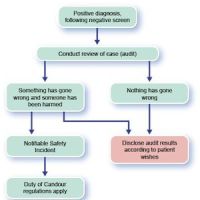Using patient questionnaires to obtain additional clinical history can assist more accurate diagnosis, according to a study presented by Ankur Doshi, MD, NYU Langone Medical Center at the Radiological Society of North America (RSNA) annual scientific meeting in Chicago this week.
Their study investigated if adding patient questionnaires at time of reading impacted abdominopelvic CT interpretation. In their department, outpatients who have a CT complete a written questionnaire about their symptoms and medical history, which is scanned into the electronic medical record. They analysed 100 outpatient contrast-enhanced abdominopelvic CT examinations performed for the evaluation of abdominal pain, and selected at random. They compared the indication entered by the ordering physician and the patient questionnaire in terms of specificity of the location of pain.
An abdominal imaging fellow and abdominal radiologist with 5 years of experience independently interpreted the examinations in two separate reading sessions. In the first session, readers had only the exam indication entered by the ordering physician. In the second session, readers also received the scanned patient questionnaire. During each session, readers recorded any identified cause for abdominal pain and rated their confidence in interpretation (scale of 1 – 5; least to greatest).
Results
In 29% of cases the questionnaire contained a more specific location for pain than the exam indication entered by the ordering physician. Of these, the pain was localised to a specific quadrant in 45%. In comparison with use of the provided history alone, use of the questionnaire resulted in identification of a cause for abdominal pain by the radiologist in an additional 7% of cases for the fellow and 4% of cases for the abdominal radiologist. In addition, in 11% of cases the symptoms reported by the patient differed from those in the order request.
Doshi recommended that radiology practices implement patient questionnaires and make these readily available to radiologists at the time of interpretation in order to improve exam interpretations, as they provide additional relevant clinical history that can offer more specific symptom localisation, increased diagnostic yield, and improve radiologists’ confidence in interpretation.
Image Credit: RSNA
Latest Articles
#RSNA16, RSNA 2016, patient questionnaire
Using patient questionnaires to obtain additional clinical history can assist more accurate diagnosis, according to a study presented by Ankur Doshi, MD, NYU Langone Medical Center at the Radiological Society of North America (RSNA) annual scientific meet



























